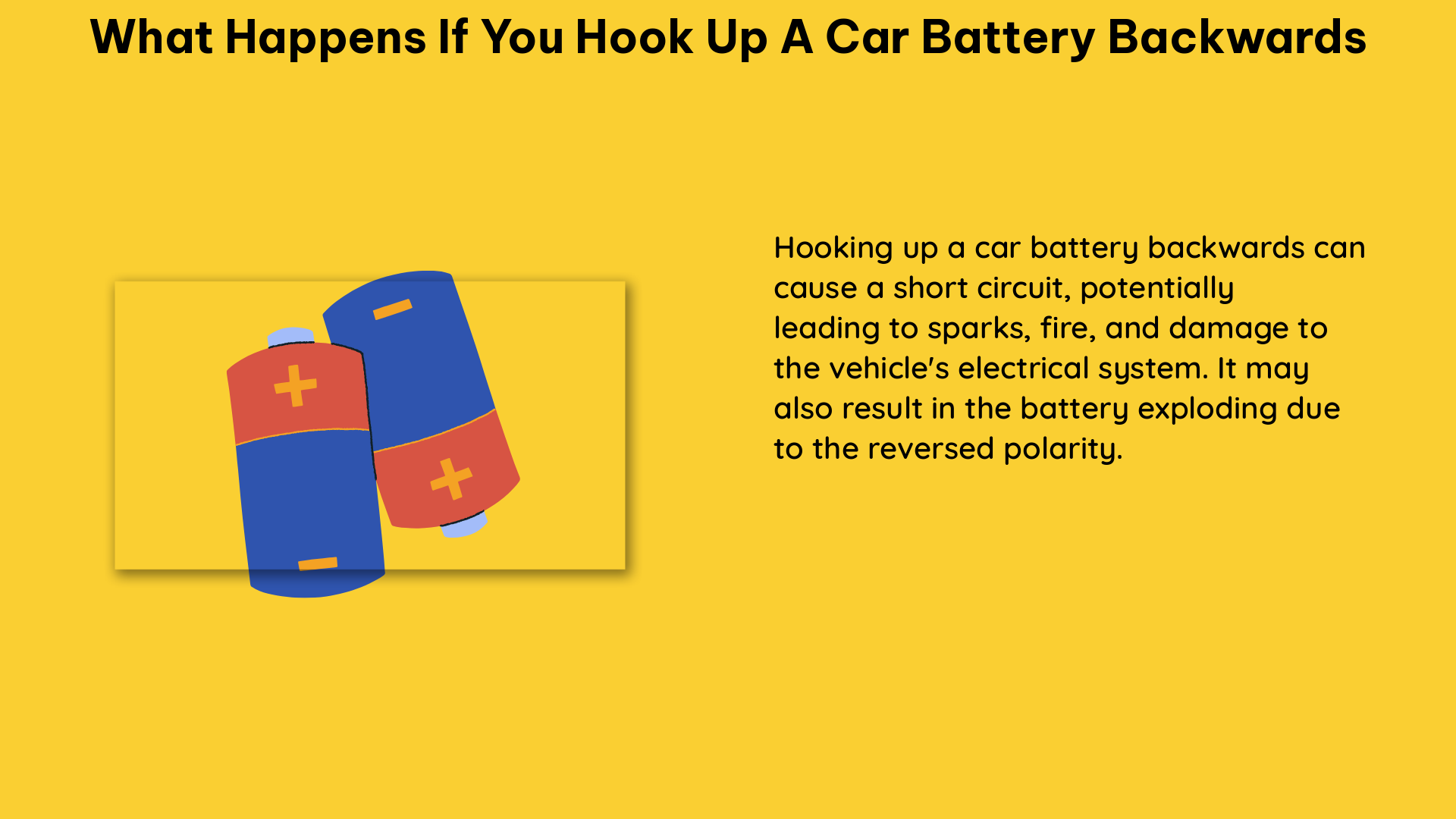When a car battery is connected backwards, it can cause a range of issues, from minor inconveniences to serious damage. From blown fuses to personal injury, the consequences of this mistake can be severe and costly. In this comprehensive guide, we’ll dive deep into the technical specifications, potential consequences, and step-by-step DIY instructions to help you navigate this situation safely.
Blown Fuses or Fusible Links
Fuses and fusible links are critical components in a vehicle’s electrical system, acting as circuit protection devices between the battery and other electrical components. When a car battery is connected backwards, it can result in one or more blown fuses, preventing the affected circuits from functioning correctly. Replacing these blown fuses is a necessary step before attempting to start the vehicle.
Damaged Battery

Reversing the battery cables creates a surge of electrical current that can severely damage the battery itself. This surge can cause internal short circuits, warping of the battery plates, and even a complete failure of the battery, rendering it irreparable. The extent of the damage will depend on factors such as the battery’s age, quality, and the duration of the reversed connection.
Damaged Jumper Cables
Reversing the polarity of the jumper cables during a jump-start can lead to a drastic increase in the amount of electrical current flowing through them. This can cause the cables to melt, catch fire, or even explode, posing a serious safety hazard.
Fried Electrical Components and Wiring
In an ideal scenario, the vehicle’s fuses would protect the sensitive electronics from the surge of electrical energy caused by reversed battery cables. However, this is not always the case, and the alternator, control modules, and other electrical components can become damaged, leading to costly repairs.
Personal Injury
Batteries vent flammable hydrogen gas, and reversing the battery cables can create sparks that could ignite this gas, leading to an explosion. This poses a significant risk of personal injury, including burns, shrapnel wounds, and even death.
Technical Specifications
When a car battery is connected backwards, the following technical specifications are affected:
- Voltage: The voltage of the battery will be reversed, typically from the standard 12V to -12V. This can cause damage to the battery and other electrical components.
- Current: The current flowing through the battery and the electrical system will be reversed, which can lead to damage to the battery, jumper cables, and other electrical components.
- Polarity: The polarity of the electrical system will be reversed, which can cause further damage to the battery, jumper cables, and other electrical components.
DIY: What to Do If You Connect a Car Battery Backwards
If you accidentally hook up a car battery backwards, follow these steps:
- Disconnect the battery immediately: As soon as you realize your mistake, disconnect the battery to prevent any further damage.
- Check for blown fuses or fusible links: Inspect the vehicle’s fuses and fusible links, and replace any that have blown.
- Inspect the battery and electrical system: Carefully examine the battery and the electrical system for any signs of damage, such as melted jumper cables or fried components.
- Consult a professional: If you’re unsure about the extent of the damage or how to proceed, it’s best to consult a professional mechanic or the vehicle manufacturer’s instructions.
Remember, the consequences of hooking up a car battery backwards can be severe, and it’s crucial to act quickly and cautiously to minimize the potential for further damage.
References:
- What Happens When You Connect a Car Battery Backwards?
- What would happen if you install a car battery backwards?
- Consequences of Hooking a Car Battery backwards
- What Happens If You Reverse Jumper Cables & Other Mistakes When Jumpstarting Your Car

The lambdageeks.com Core SME Team is a group of experienced subject matter experts from diverse scientific and technical fields including Physics, Chemistry, Technology,Electronics & Electrical Engineering, Automotive, Mechanical Engineering. Our team collaborates to create high-quality, well-researched articles on a wide range of science and technology topics for the lambdageeks.com website.
All Our Senior SME are having more than 7 Years of experience in the respective fields . They are either Working Industry Professionals or assocaited With different Universities. Refer Our Authors Page to get to know About our Core SMEs.